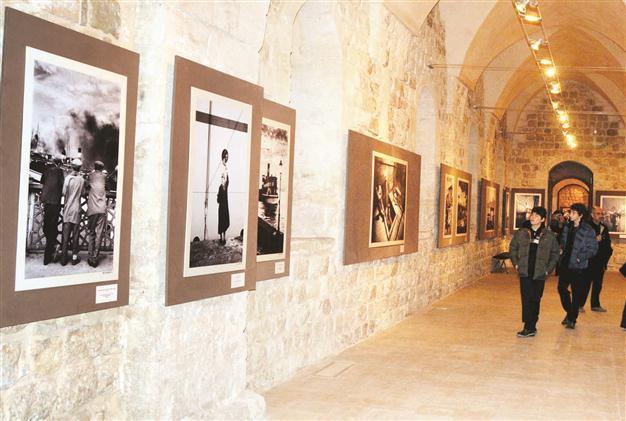Mardin’s locals, tourists display big interest in Sabancı Museum
ISTANBUL - Hürriyet Daily News

Turkey’s master of photography, Ara Güler’s photographs will be on display at the museum throughout the year under the title ‘Lo and Behold... Ara Güler.”
A recently opened exhibition by photography master Ara Güler at Mardin’s Sakıp Sabancı City Museum has proven to be very popular with visitors, drawing 12,000 in the two months since it opened.“The exhibition by the world-renowned artist Ara Güler has increased the number of visitors, especially foreigners, to a great extent,” the museum’s director, Gani Tarkan, recently told Anatolia news agency.
Of the 12,000 who have visited since Güler’s “Lo and Behold... Ara Güler in Mardin” exhibition opened in the southeastern province in November, 5,300 are foreigners, Tarkan said, adding that the museum only attracted 5,000 foreigners in total last year, when the museum featured works from Abidin Dino.
Tarkan said the satisfaction of visitors already showed that more people would come to the province in the coming years.
The director said the museum had drawn great interest from city locals since it first opened and that it displayed artwork reflecting regional features, urban structures and lifestyles, inter-communal ties, language and cultural features.
The museum opened Oct. 3, 2009, and has been visited by 218,000 since then, he said.
Tarkan said the Güler exhibition featured a documentation of the memories of daily life and added that the Istanbul-born artist was the country’s first and foremost promoter of the Turkish art of photography in the world.
Güler’s photos are on display in two sections titled “To Know and Understand” and “Face to Face,” Tarkan said. “The endless Anatolian plateaus, mountains and cities have a different understanding of aesthetics in Güler’s photos [as seen in the ‘To Know and Understand’ section]. He knows very well these lands that he has visited since he started taking photos; he feels Anatolia in his heart. His photos are the story of ordinary Anatolian people.”

Tarkan said each photo describing humanity was a reflection of Güler’s point of view on life. “Anatolian people, as well as Turkish and international celebrities, can be seen in the section ‘Face to Face’ in the true, flawless and confident way of Güler. In his portraits of people, each person in the forefront has a strong relation with the background. Theatrical lights, endless horizons and dark cloud banks sometimes have [a big role] in his photos. They are superior compositions.”
He said the exhibition, curated by Engin Özendeş, would remain open throughout the year. “We are also organizing education programs for children between the ages of 7 and 14.”
Mardin City Museum
The Sakıp Sabancı Mardin City Museum aims to exhibit and promote the urban development and culture of Mardin while the Dilek Sabancı Art Gallery strives to help found a modern and contemporary platform for art with temporary exhibitions.
The historical building, which was built in 1889 at the time of Ottoman Sultan Abdülhamit II by Diyarbakır Gov. Hacı Hasan Paşa, served as a military structure at first, then a recruiting office and a tax administration building between 1991 and 2003. It is now hosting visitors as the Sakıp Sabancı Mardin City Museum and Dilek Sabancı Art Gallery after a three-year restoration process.
The Sabancı Foundation spent 7 million Turkish Liras for the establishment of the museum and the art gallery.
The works being displayed in the museum are made up of some borrowed from the Mardin Museum and others in the vicinity, and some donated by the Education and Cooperation Foundation for Citizens of Mardin Settled in Istanbul (MAREV), as well as residents from Mardin.
The foundation of the Sakıp Sabancı Mardin City Museum was laid in 2006. It covers an area of 1,600 square meters.
The long and thin structure of the building is made up of display units along a linear walking area. Features unique to Mardin’s identity are highlighted in the display area. In addition to the exhibiting units of various dimensions, handmade works are displayed in the existing alcoves of the building.
















